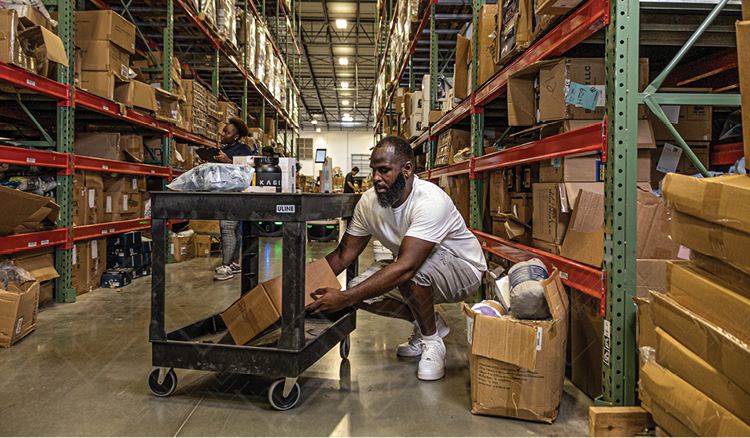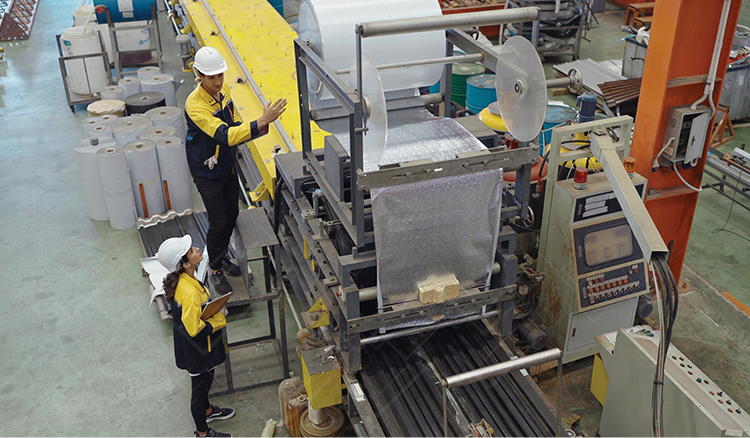The Future of Manufacturing: Local, Decentralized Manufacturing
The future of manufacturing is localized, agile, asset-light, and focused on customization to meet each customer’s preference.
Reshoring, localizing, and decentralizing manufacturing will soon be possible and are necessary for us to say we’ve achieved the next revolution in manufacturing. Economies of scale have gotten us far, but the next step will be mass customization with greater involvement and control at the local level. This will necessitate dramatic changes in the manufacturing footprint and the logistics frameworks that support the supply chain.
This article is part two of a series called “The Future of Manufacturing,” in which we’ll explore the technologies and ideas that will be used in the next manufacturing revolution. We will share a high-level view of these technologies and concepts, acknowledging that these articles are just a starting point for your journey to a deep understanding of each technology and idea.
What is Local, Decentralized Manufacturing?
Decentralized manufacturing is manufacturing performed locally as opposed to being centrally manufactured in one location and then distributed far and wide. The goal with decentralized manufacturing is to build as near to the customer as possible.
Within the borders of the US, this would look like a large automobile manufacturer having plants in each state, rather than having a few huge plants in select cities. Having one manufacturing facility in Detroit would be centralized manufacturing. Having facilities in each state would be decentralized manufacturing.
The theoretical limit of decentralized manufacturing would be each person being able to produce what they need in their own home. So you can see that even the term “decentralized manufacturing” has a spectrum of possibilities within it.
Pros of Decentralized Manufacturing
The optimal decentralized manufacturing setup would:
- Lower distribution costs
- Lower warehousing costs
- Improved lead times
- Improved efficiency of just-in-time manufacturing processes
- Improved feasibility of mass customization through a tight feedback loop
By being closer to the customers they serve, businesses can more quickly gather insight into how customers use their products and what improvements or customizations they want. They will also be able to deliver faster and iterate on product designs more quickly. This will result in better customer satisfaction on many fronts, with the added benefit of reducing the transportation burden associated with returns and other unsavory logistics scenarios.
Cons of Decentralized Manufacturing
Decentralized manufacturing has some cons in the short-term, due to the comparative advantage of centralized manufacturing in per-unit costs.
The main cons of decentralized manufacturing in the current state are:
- Higher per-unit cost
- Lack of established best practices / familiarity among supply chain professionals
- Transitional costs incurred by supply chain as a whole when adopting the new system
It will be difficult to transition from a heavily centralized and offshored production system to one that is decentralized. The upfront costs and “changeover” from the old system to a new one will likely create some temporary discomfort for the supply chain as a whole, as early adopters carve out sections of the supply chain to better serve their decentralized situation.
What Should You Know Before Adopting Decentralized Manufacturing?
There are many challenges to implementing decentralized manufacturing, but it is not impossible. You should consider your company and its goals holistically before deciding to decentralize manufacturing.
Factors:
- Scale of company
- Customization potential of products
- Capex availability
- Importance of rapid delivery to your customers
- Logistics costs
- Labor availability across footprint
Scale of Company
If your company is large enough to serve multiple regions of the United States, you would probably benefit from decentralized manufacturing.
As a rule of thumb, if the product can’t get from the end of your production line to the customer’s dock or porch overnight, you could move closer to the customer. This level of speed is increasingly demanded by customers, who would often rather purchase a lower-quality option just to have it sooner.
Customization Potential of Products
The customization potential of your products is important because if you don’t have any room for customization, then there isn’t much benefit on the manufacturing side of the equation to necessitate decentralization of production. There would still be some logistics benefits, but considering that you’d still need to transport your inputs, it won’t make much of a difference.
However, it is almost always the case that there will be some room for customization with your product (even if you’re not aware of it yet). The powerful and long-enduring trend towards customization means that you will be left in the dust if a competitor offers customers a way to more quickly get what they need, exactly how they need it. This is where decentralization will be a huge boon to your business’s ability to listen and respond to demand on the local level.
Capex Availability
Of course there is a cost associated with distributing facilities across your footprint because you would need to build new production facilities or warehouses in more locations. This is an obvious upfront cost, but the payoffs over time could be worth the capital expenditures now.
Estimating this cost would require a more thorough and advanced accounting than this author is equipped to handle, and we could not possibly understand the complexities of each reader’s business.
However, one readily apparent operational impact of decentralizing production is the change in inventory required across your footprint. To approximate how this will affect your inventory levels, you can use the square root law of inventory.
X2 = (X1) * sqrt(n2/n1)
In the above equation, n2 is the number of new locations, n1 is the number of existing locations, and X1 is current inventory.
This law tends to hold true because of the need for safety stock at each location and other necessary, stock-related evils. This underscores the importance of aggressive lean manufacturing methods to reduce the reliance on inventory, as well as the potential efficiency gains realizable through additive manufacturing.
Importance of Rapid Delivery to Your Customers
If your customers prioritize rapid delivery, you will likely benefit from decentralized manufacturing more quickly than businesses with customers that are less sensitive to lead times.
If your customers are not very sensitive to lead times, then it is not as timely for you to execute a decentralized manufacturing strategy.
However, in the long run, technological advances and competitive pressures will push all businesses into decentralized production to keep up with strategic initiatives by distribution behemoths like Amazon.
Logistics Costs
The cost of logistics naturally changes with your footprint. Typically, moving goods a shorter distance costs less, raw materials are easier to transport than finished goods, and reverse logistics are easier to execute on the local level. Thus, a decentralized manufacturing strategy would reduce logistics costs.
If you do not have complex logistics, you might not benefit from logistics-related cost reductions as much as other companies when moving to a decentralized strategy.
In all cases, there will be some discomfort in changing your logistics arrangements. However, the long-term returns should weigh more heavily in your considerations.
Labor Availability Across Your Footprint
A critical part of going to a decentralized manufacturing strategy is managing your labor capacity properly. This transition could be a chance to analyze and optimize your labor practices.
With decentralization there will inevitably come more micro-variations in demand on the local level. You will need to be flexible and agile to respond to these changes in a cost-effective way. Traditional staffing won’t work here; a fact that many proponents of advanced manufacturing technology are quick to point out.
Automation is prohibitively expensive for most companies right now, so the best solution is one that involves people. We believe the best way to handle fluctuations in demand is a mix of FTEs and on-demand labor.
Decentralized manufacturing companies using on-demand labor will have FTEs for their baseline demand and build flexible capacity for handling anything above that. This lets them optimize their labor capacity, so that they have enough to meet minimum demand and can easily change their capacity day to day to match the much more volatile demand profile of a local operation that demands customization.
This key enabler of decentralized manufacturing is one that Veryable is uniquely positioned to help your company solve. Learn more about our on-demand labor marketplace to get a headstart on embracing the future of manufacturing.
Previous Posts
How Policy Constraints, Not Just Production Bottlenecks, Threaten Your Bottom Line
The Future of Manufacturing and Logistics
Create a free business profile today to explore our platform.






